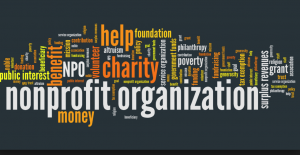Summary: On today’s Nonprofit MBA Podcast, Doug Borwick from Outfitter4 talks about how the value of the board can be increased through an understanding of their role and application of board development principles. Nonprofit boards can and should be the principal source of support (moral and financial) for their organizations. It is the key role of a nonprofit board.
About the Guest Doug Borwick, CEO of Outfitter4
For three decades, Doug Borwick served as Director of the Not-for-Profit Management and Arts Management Programs at Salem College in Winston-Salem, NC. At Salem, Doug created the major in Not-for-Profit Management and in 1997 Doug was appointed Salem Distinguished Professor. Dr. Borwick is a sought-after speaker at conferences both nationally and internationally.
Outfitters4 is a provider of a full range of back-office and planning services for nonprofits. Outfitters4 exists to assume the burdens of routine management so nonprofits can focus on their missions. Their experienced staff provides services ranging from financial and HR management to planning and consultation.
Nonprofit Boards: The Executive Director’s Best Friends (No, Really!)
The reason boards can be challenging is because the people on the board come from so many different backgrounds.
Boards have several rolls and one of them is to make sure the public money is being spent wisely.
Often there’s no board job description and no list of responsibilities.
The training of your board is critical for many nonprofits.
The principal responsibility of a board should be to be a resource, but many nonprofits look to board members as only the biggest donators.
Boards are really important to the access it can bring to the community and that is why it is important that the board has diversity.
When Doug deals with Executive Directors who can let their hair down, they tell him that they wish the boards were more of a resource.
Every meeting going on should be meaningful, productive and fun and that applies to board meetings as well.
Doug’s first question when talking with Executive Directors is “how well is the attendance at your board meetings”. It’s amazing how many ED’s have problems getting every board member to attend and Doug believes part of that is due to the board meeting being boring.
In board meetings, you shouldn’t be reading reports. Every meeting should have extended time to talk about substantive issues that you need feedback on.
Executive Directors should help board members feel like their mental participation and ideas are just as critical as their financial contributions.
A lot of boards are often underutilized.
Community connections is such a key part of board members.
When the board is together in the room, they should think of themselves as the organization.
When a board member is outside of the group then they should think of themselves as a volunteer.
The fastest way to undermine a ED is to have the board get involved with the employees.
A maverick on the board often comes about due to a lack of understanding of what everyone is responsible for.
What Doug advocates are an annual review of each board member and Doug starts that off with each board member writing up what they should deliver in one year. It allows the individual to understand what they are responsible for and if they are contributing towards the mission of the nonprofit.
There has to be a strong Board President to help with maverick board members.
The recruitment and training process is really important for all nonprofits.
You shouldn’t wait until the end of the year to recruit board members. You should throughout the year have a tickler file of potential good board members that will add diversity to the board.
Training is so important to have a good board.
Most board members don’t understand the legal responsibilities the board has both professionally and personally.
Board training needs to happen yearly for both new and existing board members.
Doug gets called in sometimes because of emergencies but other times because of the ED and Board President.
Boards often need a structure that is often lacking.
The nature of a board changes as the nonprofit gets older.
After the Founder leaves the nonprofit the board really changes because usually the founder did everything and now the board really needs to step in.
Once the Founder leaves it becomes so obvious that there needed to be processes put in place so that the organization can still run smoothly.
As a ED, start with one thing that makes sense. Don’t tackle everything at once.
Bringing someone like Doug in, since he is an outsider, often helps everyone.
Other Podcasts:
NonprofitMBA Podcast 1.1: Keeping it Personal As Your Nonprofit Grows
NonprofitMBA Podcast 1.2: What To Do When Your Nonprofits Mission and Operations Go Adrift
NonprofitMBA Podcast 1.3: Why Forecasting Is So Important For Nonprofits
Succession Planning for your Nonprofit: NonprofitMBA Podcast 1.4
The Newest Strategy in Fundraising for Nonprofits: NonprofitMBA Podcast 1.5

Financing Solutions is the leader in providing a Line of Credit to Nonprofits.
About The Host Stephen Halasnik, Financing Solutions
Stephen Halasnik is the host of the popular, The Nonprofit MBA Podcast. The Nonprofit MBA podcast’s purpose is to help nonprofit leaders. Mr. Halasnik is the Co-founder and Managing Partner of Financing Solutions. Financing Solutions is a leading provider of Lines of Credit to nonprofits and small businesses.
Mr. Halasnik is a graduate of Rutgers University and has an Executive Masters from the MIT Birthing of Giants Entrepreneurship program. Mr. Halasnik is a best selling Amazon author and is considered a leading authority on building great, purpose-driven businesses. Mr. Halasnik lives in New Jersey with his best friend, his wife Gina. Mr. Halasnik’s number one purpose is raising his two boys, Michael and Maxwell, to be good men.
About Financing Solutions Nonprofit Line of Credit
Financing Solutions, an A+ and 5 stars rated BBB company since 2002, is a direct lender that provides lines of credit to nonprofits and small businesses.
Financing Solutions nonprofit financing product is a great alternative to a traditional bank line of credit because it costs nothing to set up, nothing until used, and when used, is inexpensive. The credit line requires no collateral and no personal guarantees.
Nonprofit Organizations use their line of credit to help with emergencies or opportunities when cash flow is temporarily down (i.e. Payroll funding)
Please feel free to fill out the no-obligation, 2-minute nonprofit line of credit application here. The time to set up a credit line is when you don’t need it so that it is ready to be used, just in case.
Note: Financing Solutions donates 10% of its profits to various nonprofit charities









